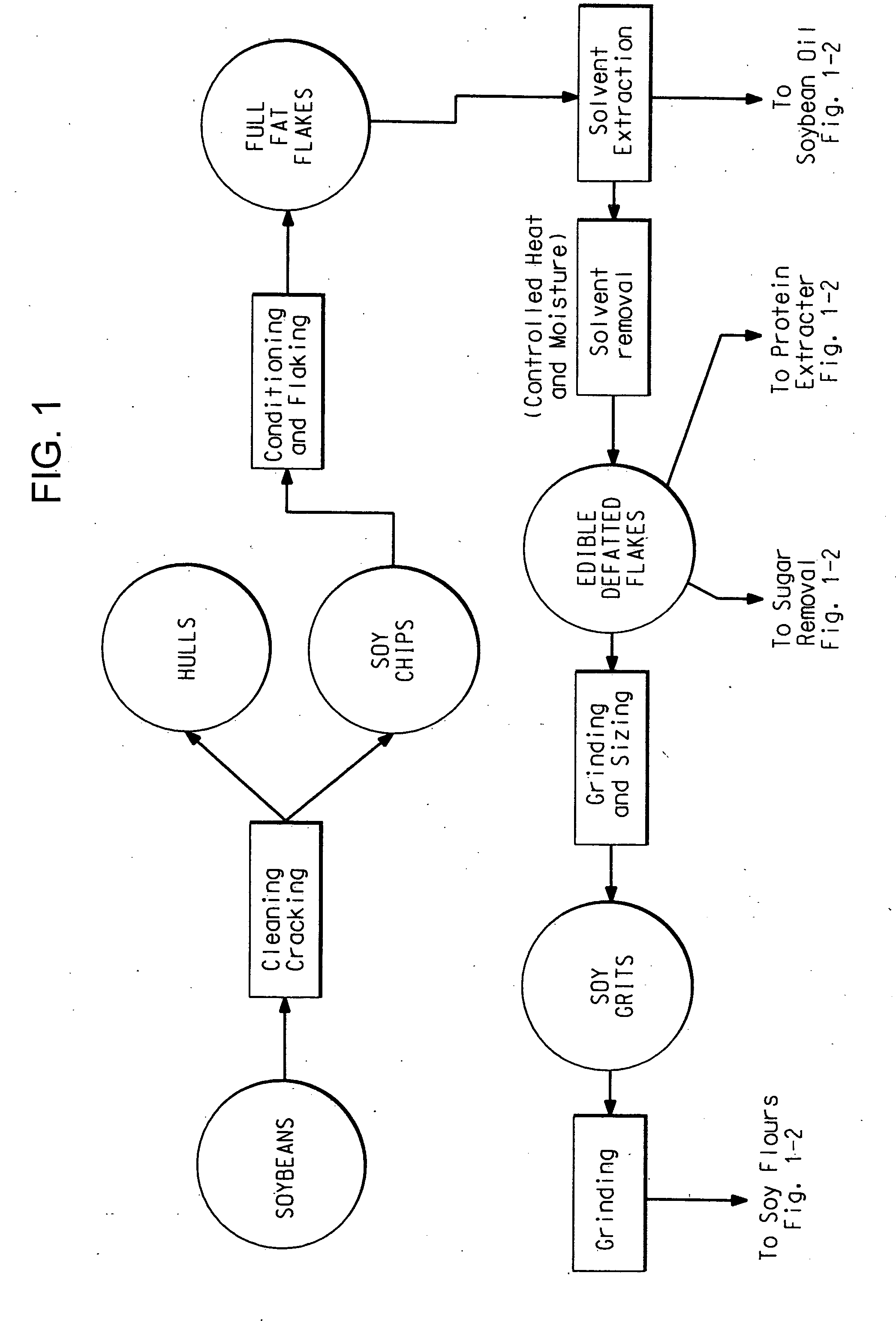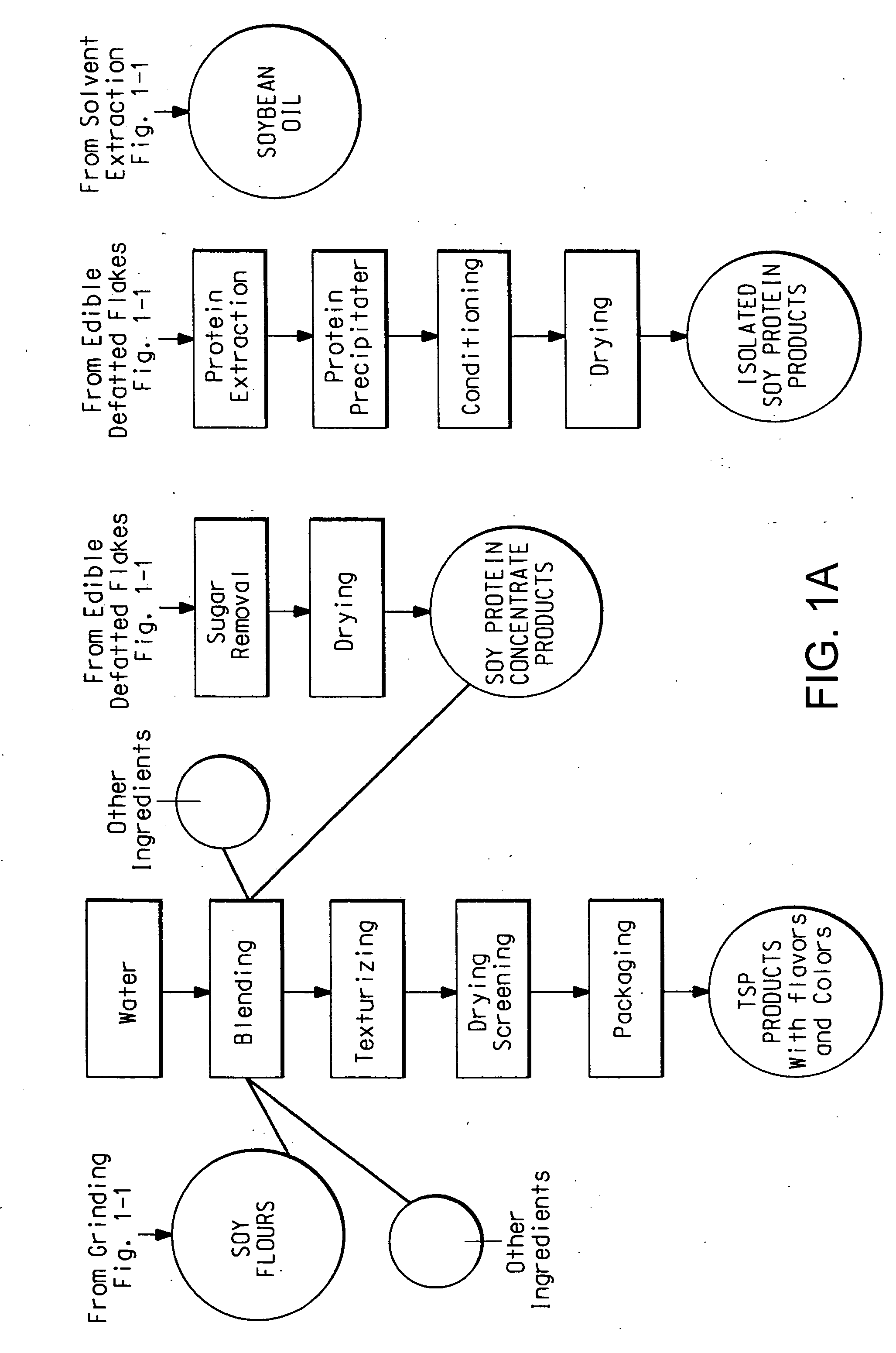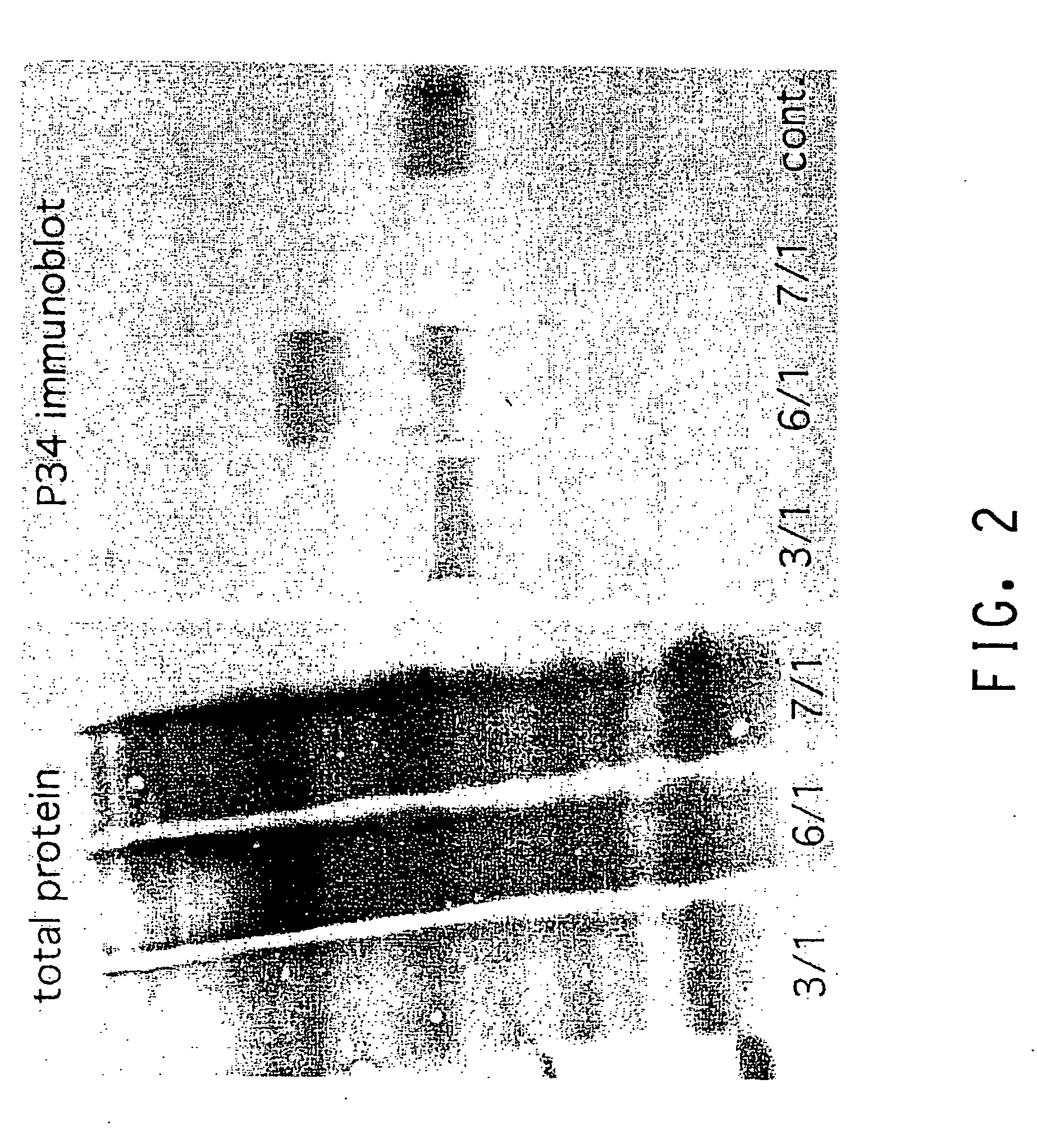Hypoallergenic transgenic soybeans
a transgenic soybean and hypoallergenic technology, applied in the field of hypoallergenic transgenic soybeans, can solve the problems of difficult to avoid soybean products, food allergy is a serious nutritional problem in children and adults, and soybean protein allergies pose a significant problem for many peopl
- Summary
- Abstract
- Description
- Claims
- Application Information
AI Technical Summary
Problems solved by technology
Method used
Image
Examples
example 1
Alteration of Gly m 1 Content of Soybean Somatic Embryos
[0155] The ability to change the Gly m I content of soybean embryos by gene suppression was tested by preparing transgenic soybean somatic embryos and assaying the isoflavone levels. The entire insert from Genbank clone J05560 was amplified in a standard PCR reaction on a Perkin Elmer Applied Biosystems GeneAmp PCR System using Pfu polymerase (Stratagene) with the primers shown in SEQ ID NO:7 and SEQ ID NO:8:
5′-GAATTCGCGGCCGCATGGGTTTCCTTGTGT-3′[SEQ ID NO:7]5′-GAATTCGCGGCCGCTCAAAGAGGAGAGTGA-3′[SEQ ID NO:8]
[0156] The resulting fragment is bound by Not I sites in the primer sequences (underlined above) and contains a 5′ leader sequence, the coding region for Gly m 1, the untranslated 3′ region from SEQ ID NO: and a stretch of 18 A residues at the 3′ end. This fragment was digested with Not I and ligated to Not I-digested and phosphatase-treated pKS67. The plasmid pKS67 was prepared from pRB20 (U.S. Pat. No. 5,846,784) by replac...
example 2
Transformation of Somatic Soybean Embryo Cultures
[0157] Soybean embryogenic suspension cultures were maintained in 35 ml liquid media (SB55 or SBP6) on a rotary shaker, 150 rpm, at 28° C. with mixed fluorescent and incandescent lights on a 16:8 h day / night schedule. Cultures were subcultured every four weeks by inoculating approximately 35 mg of tissue into 35 ml of liquid medium.
TABLE 2Stock Solutions (g / L):MS Sulfate 100X StockMgSO4 7H2O37.0MnSO4 H2O1.69ZnSO4 7H2O0.86CuSO4 5H2O0.0025MS Halides 100X StockCaCl2 2H2O44.0KI0.083CoCl2 6H200.00125KH2PO417.0H3BO30.62Na2MoO4 2H2O0.025MS FeEDTA 100X StockNa2EDTA3.724FeSO4 7H2O2.784B5 Vitamin Stock10 g m-inositol100 mg nicotinic acid100 mg pyridoxine HCl1 g thiamineSB55 (per Liter, pH 5.7)10 mL each MS stocks1 mL B5 Vitamin stock0.8 g NH4NO33.033 g KNO31 mL 2,4-D (10 mg / mL stock)60 g sucrose0.667 g asparagineSBP6same as SB55 except 0.5 mL 2,4-DSB103 (per Liter, pH 5.7)1X MS Salts6% maltose750 mg MgCl20.2% GelriteSB71-1 (per Liter, pH 5.7...
example 3
The Phenotype of Transgenic Soybean Somatic Embryos is Predictive of Seed Phenotypes from Resultant Regenerated Plants
[0162] Mature somatic soybean embryos are a good model for zygotic embryos. While in the globular embryo state in liquid culture, somatic soybean embryos contain very low amounts of triacylglycerol or storage proteins typical of maturing, zygotic soybean embryos. At this developmental stage, the ratio of total triacylglyceride to total polar lipid (phospholipids and glycolipid) is about 1:4, as is typical of zygotic soybean embryos at the developmental stage from which the somatic embryo culture was initiated. At the globular stage as well, the mRNAs for the prominent seed proteins, α′ subunit of β-conglycinin, kunitz trypsin inhibitor 3, and seed lectin are essentially absent. Upon transfer to hormone-free media to allow differentiation to the maturing somatic embryo state, triacylglycerol becomes the most abundant lipid class. As well, mRNAs for α′-subunit of β-co...
PUM
| Property | Measurement | Unit |
|---|---|---|
| Temperature | aaaaa | aaaaa |
| Temperature | aaaaa | aaaaa |
Abstract
Description
Claims
Application Information
 Login to View More
Login to View More - R&D
- Intellectual Property
- Life Sciences
- Materials
- Tech Scout
- Unparalleled Data Quality
- Higher Quality Content
- 60% Fewer Hallucinations
Browse by: Latest US Patents, China's latest patents, Technical Efficacy Thesaurus, Application Domain, Technology Topic, Popular Technical Reports.
© 2025 PatSnap. All rights reserved.Legal|Privacy policy|Modern Slavery Act Transparency Statement|Sitemap|About US| Contact US: help@patsnap.com



